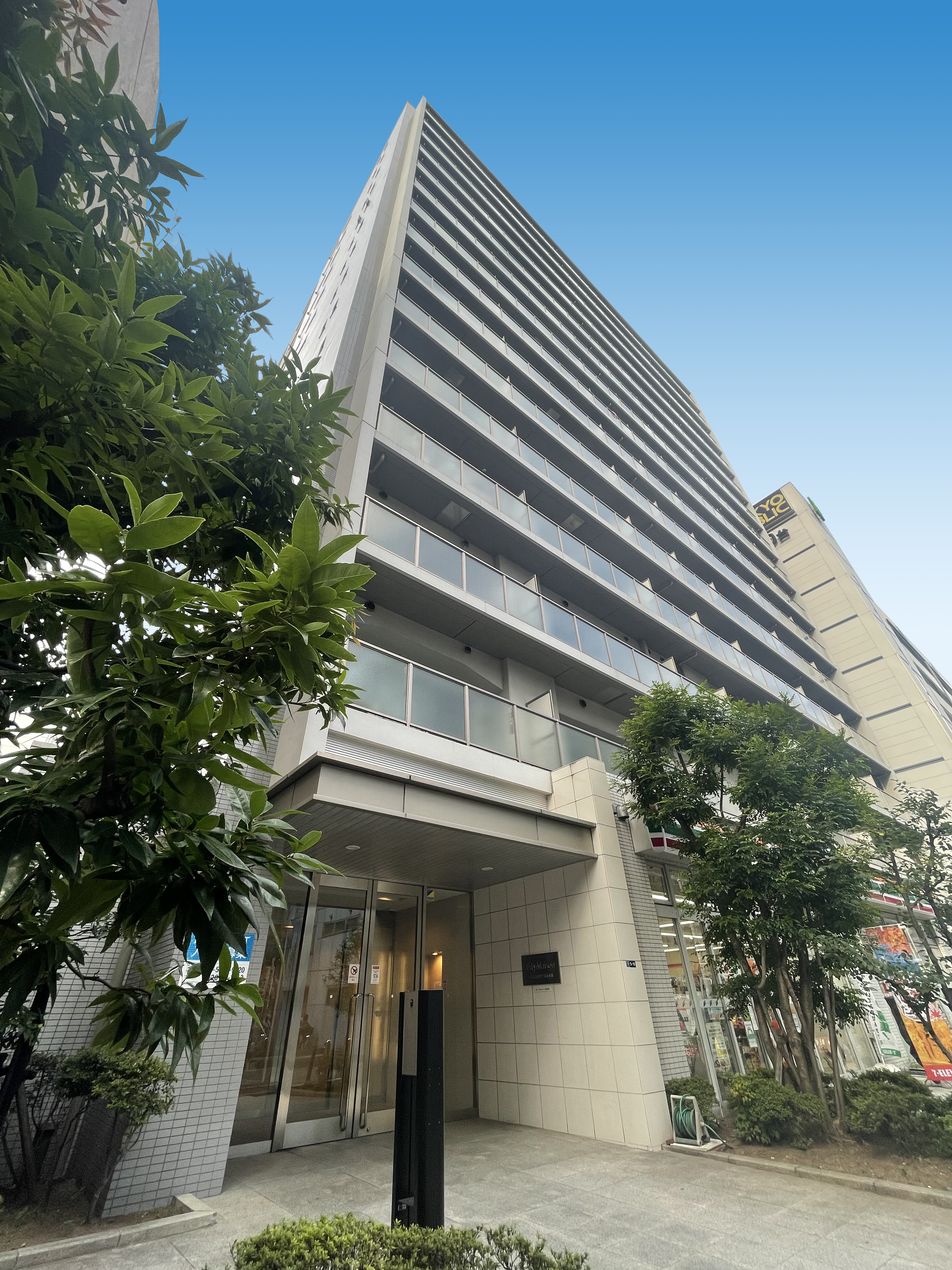Investment Strategy
- Home
- Features of SHR
- Investment Strategy


Priority investment in Prime Properties centering on
"Strategic Location" and "High Quality"
Prime Properties
Based on the fundamental recognition that there is a growing need for real estate located at sites suited for "bases for sustainable living" for residents or sites suited for "sustainable bases of operation" of tenant companies and needs for real estate with high, basic functionality as residences, such as comfort and safety, and functionality desired by tenant companies, SHR designates high quality residential and commercial properties, located at strategic locations "Prime Properties" and prioritize investments in Prime Properties.
≪Concepts of Strategic Location and High Quality≫
| Asset Category | Strategic Location | High Quality |
|---|---|---|
| Residential Properties | Sites suited for "bases for sustainable living" for residents | As residences, provide high basic functionality, such as comfort and safety, and give due consideration to the environment as a societal request to make comprehensive determinations regarding buildings suited to the neighborhoods and the like |
| Commercial Properties | Sites suited for "sustainable bases of operation" of tenant companies | In addition to the functionality wanted by tenant companies, give consideration to the environment as a societal request establish specifications suitable for BCP sites to make comprehensive determinations regarding buildings suited to the neighborhoods and the like |
SHR selects Prime Properties through a comprehensive assessment by focusing on an analysis of the below 6 factors.
≪6 Factors of Prime Properties≫
Portfolio Development Policy
Investment Ratio by Asset Category
SHR positions and invests in residences, which form "the bases of living" for residents, and office buildings, which form "the basis of operation for businesses", as the core assets of portfolio, and engages in investment in hotels with growth prospects; by doing so SHR will aim to build a portfolio characterized by both high stability and high quality.
Portfolio Investment ratios (aquisition price basis) by asset category and investment ratio targets are shown in the table below.
| Asset Category |
Asset Type | Examples of Specific Asset Types |
Portfolio Investment Ratio (acquisition price basis) |
Medium Term Target Investment Ratio(Note) |
|
|---|---|---|---|---|---|
| Residential Properties | Core Assets |
Residences Student dormitories Company housing |
50%~80% | Approx.65% | |
| Office building | Office buildings Data centers |
15%~45% | Approx.30% | ||
| Commercial Properties |
Hotel | Hotels | 0%~15% | Approx.5% | |
| Retail and other properties |
Retail properties Serviced apartments Senior housing (serviced housing for the elderly, paid nursing homes, and adult day care centers) |
| (Note) | Medium Term Target Investment Ratio describes the target investment ratio of the overall portfolio over the medium-term. It is not guaranteed or promised that those targets will be achieved, and the actual investment ratios may differ substantially from the targets. |
|---|
Investment Ratio by Area
SHR has set priority investment areas in light of the characteristics of each asset category, as shown in the following chart. SHR considers Greater Tokyo as its priority investment area for residential properties, with a particular focus on Tokyo 23 wards, where it foresees ample leasing demand and a supply of superior properties, and the Three Major Metropolitan Areas as its priority investment areas for commercial properties with a particular focus on the three largest cities (Tokyo 23 wards, Osaka and Nagoya) where it believes it can achieve stable investment results against a backdrop of robust demand by tenants for bases of business operations. Regarding overseas real estate investment, although investments in residential properties and commercial properties are allowed, SHR will maintain a cautious stance in the near future.
≪Investment Ratio for Residential Properties by Geographical Area≫
| Category | Specific Area | Investment Ratio (acquisition price basis) |
|---|---|---|
| Greater Tokyo ≪priority investment area≫ |
①Tokyo ②Kanagawa Prefecture ③Chiba Prefecture ④Saitama Prefecture |
70% or more |
| Major cities | ①Designated cities, etc.(Note 1) ②Commutable areas of (1) above(Note 2) |
Less than 30% |
| (Note 1) | "Designated cities, etc." means cities outside of Greater Tokyo which fall under government designated cities, heartland cities, cities which were specially designated cities at the time of the abolishment of the former Specially Designated Cities System or seats of prefectural governments. |
|---|---|
| (Note 2) | "Commutable area" means the region within 30 minutes' commuting distance from a particular city. |
≪Investment Ratio for Commercial Properties by Geographical Area≫
| Category | Specific Area | Investment Ratio (acquisition price basis) |
|---|---|---|
| Three Major Metropolitan Areas ≪priority investment area≫ |
①Greater Tokyo ②Osaka Area ③Nagoya Area |
80% or more |
| Other | All of Japan outside of the Three Major Metropolitan Areas | Less than 20% |
Investment Policy for Hotel
Based on the investment strategy of investing primarily in Prime Properties, SHR invests in hotels that can be expected to be highly competitive over the medium to long term and, in principle, does not invest in simplified accommodations and the like.
SHR's specific investment areas and investment classes of hotels have been clarified as follows.
≪Strategic Location for Investment in Hotels≫
・Mainly target hotels with business and tourism demand located within the Class S Area for investment
| Area Class | Area | Investment Policy (acquisition price basis) |
|---|---|---|
| Class S Area | Tokyo 23 wards, Yokohama-shi, Hakone-machi, Kyoto-shi, Osaka-shi, Kobe-shi, Sapporo-shi, Fukuoka-shi, Nagoya-shi, Hiroshima-shi, Kanazawa-shi, Naha-shi and Urayasu-shi | Main investment area (80% or more) |
| Class A Area | Tokyo, Kanagawa, Osaka, Kyoto, Hyogo, Hokkaido, Fukuoka, Okinawa, Nara, Nagano, Shizuoka and Miyagi other than Class S Area, or areas where hotels that capture narrowed demand are located (ex. Airport Terminal Hotel, etc.) | Investable area |
| Class B Area | Other than Class S or A area | Selective investment |
≪High Quality for Investment in Hotels≫
・Highly competitive Luxury or Upper Upscale hotels are main investment target
| Hotel Class (Note) |
Content | Investment Policy (acquisition price basis) |
|---|---|---|
| Luxury Upper Upscale |
Worldwide luxury hotel brands Worldwide exclusive hotel brands |
Main investment class (70% or more) |
| Upscale Upper Midscale |
Globally recognized standard hotel brands for higher end-level business/tourist use Globally recognized standard hotel brands for general business/tourist use |
Investable class |
| Midscale Economy |
Budget and economic hotel brands Lower price range than Midscale |
Not invested in principle |
| (Note) | Hotel class will be decided base on the hotel class as of the date of acquisition. |
|---|
